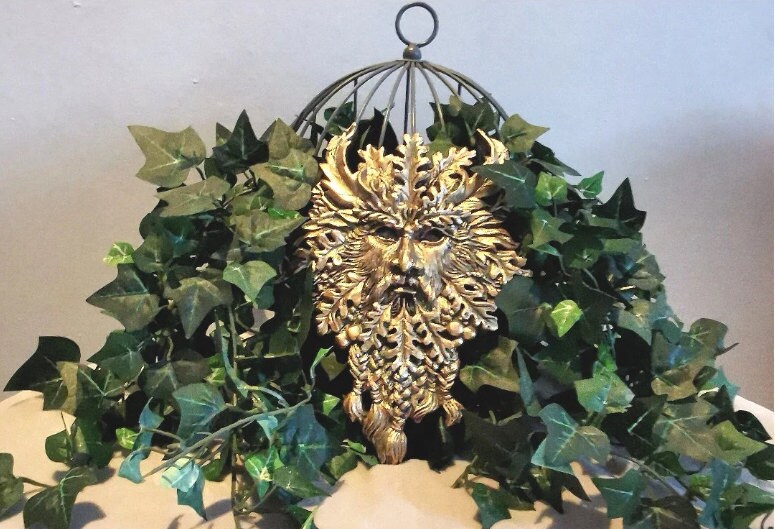The Green Man’s origins stretch back thousands of years. Similar imagery appears in the art of ancient Rome, Mesopotamia, and India. Some scholars believe the Green Man evolved from pagan nature deities such as Pan in Greek mythology or Cernunnos in Celtic tradition. These deities, often associated with forests, fertility, and the cycle of life, share many characteristics with the Green Man.The most common appearances of the Green Man are found in medieval European architecture, especially in churches and cathedrals. These stone carvings, often staring down from ceilings or hidden in corners, show faces surrounded by vines, branches, and leaves. Some even appear to be exhaling foliage, as if nature is both growing from and consuming them. These images have puzzled historians, as they exist in Christian churches despite having seemingly pagan origins. Some believe they symbolize rebirth and the spiritual connection between humans and the divine through nature.
The Green Man carries many layers of symbolism. At the most basic level, he represents the cycle of life and death in nature. Trees lose their leaves in the fall and grow them again in the spring, much like how ancient cultures viewed death and rebirth as natural parts of existence.In some interpretations, he is a guardian of the natural world, a reminder that humans must live in harmony with the environment. His presence in medieval churches may have served as a warning against destroying nature or a call to respect God’s creation. Others see him as a bridge between pagan and Christian beliefs, merging the old ways with the new faith.The Green Man’s image also carries a message of renewal and transformation. He embodies the idea that life always finds a way to continue, even in the harshest conditions. This theme resonates deeply with people today, especially as environmental concerns grow. The Green Man’s silent presence reminds us that we are part of nature, not separate from it.
Though not always called the Green Man, similar figures appear in myths and stories around the world. In British folklore, the legendary figure of Robin Hood shares characteristics with the Green Man. Living in the forest, wearing green, and defending the land, Robin Hood echoes the themes of nature’s protection and balance.The Green Knight, from the famous medieval poem Sir Gawain and the Green Knight, is another example. This mysterious, supernatural being challenges the hero, Sir Gawain, to a test of honor and courage. Some scholars see the Green Knight as a personification of the Green Man, testing humans’ relationship with nature and the cycle of life and death.
The Green Man has also inspired modern literature. Writers like J.R.R. Tolkien, C.S. Lewis, and Neil Gaiman have woven aspects of his legend into their works. In Tolkien’s The Lord of the Rings, the Ents—ancient tree-like beings—carry echoes of the Green Man’s wisdom and connection to nature.
The Green Man remains a relevant and inspiring figure today. His image is found in pubs, gardens, artwork, and festivals across Europe and beyond. Some environmental movements have even adopted him as a symbol of ecological awareness and sustainability.
Modern interpretations of the Green Man appear in films, music, and even tattoos. He represents a return to nature, a reminder to protect the planet, and an embodiment of the mystery and power of the natural world.Festivals celebrating the Green Man have become popular, especially in the United Kingdom. These events often feature music, storytelling, and displays of traditional crafts, all aimed at reconnecting people with nature and ancient traditions.
In a world increasingly disconnected from nature, the Green Man serves as a powerful reminder of our roots. As urbanization spreads and forests shrink, his image calls us back to a more balanced way of living. He challenges us to respect the environment, cherish renewal, and find harmony between human progress and the natural world.The Green Man’s endurance through centuries shows that his message is timeless. Whether seen as a guardian, a symbol of rebirth, or a reminder of nature’s cycles, he continues to inspire and captivate those who encounter his leafy face.


